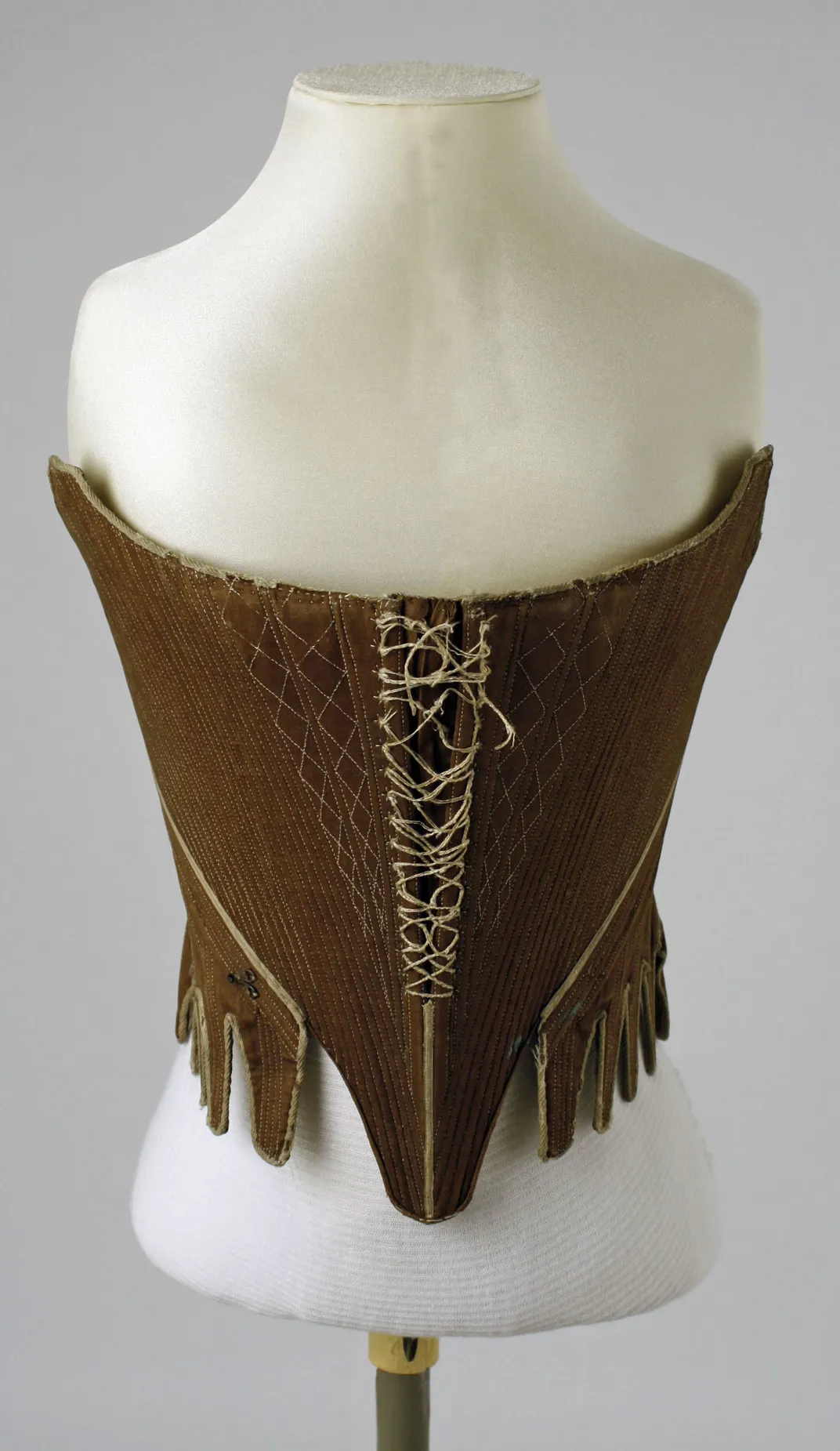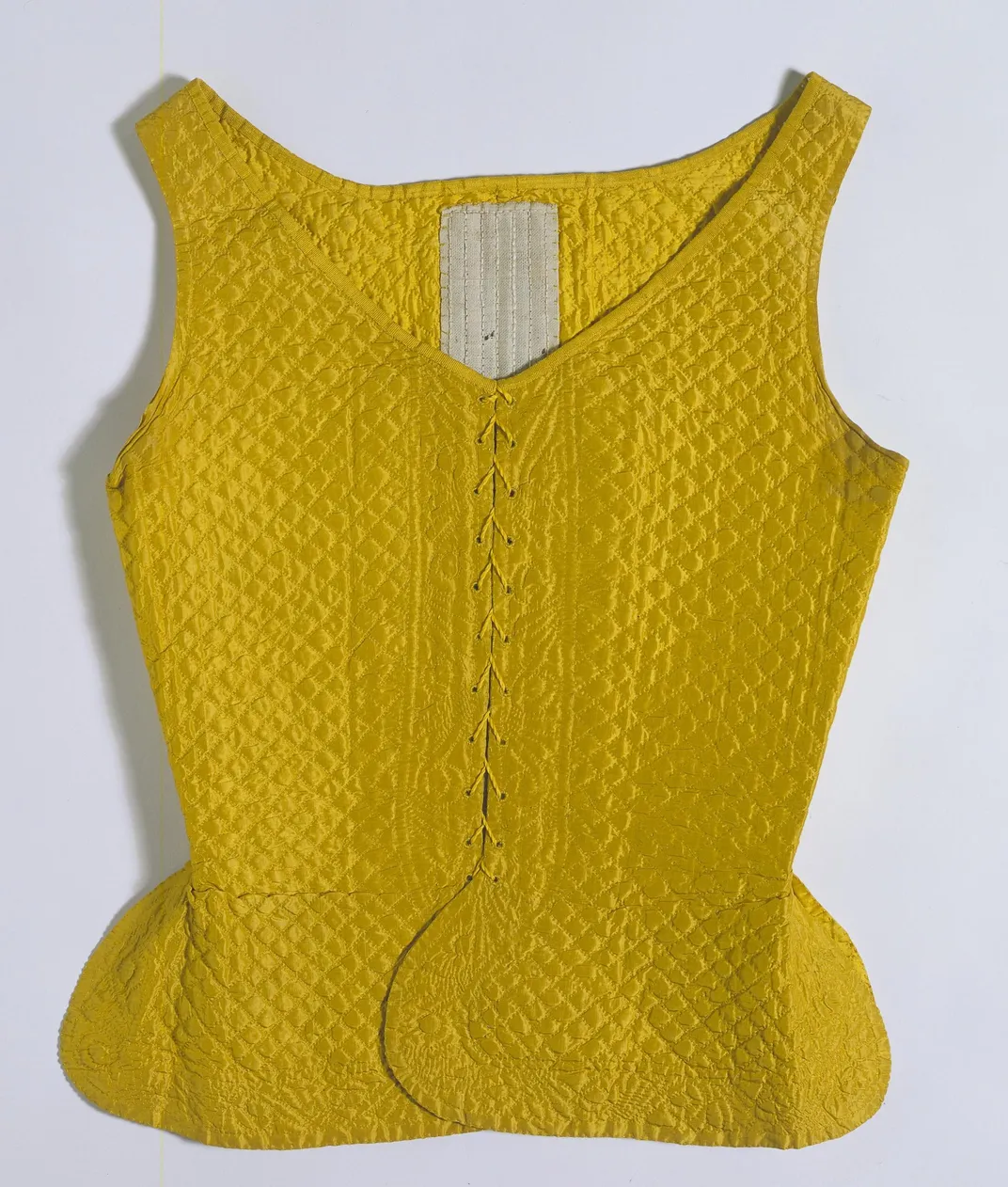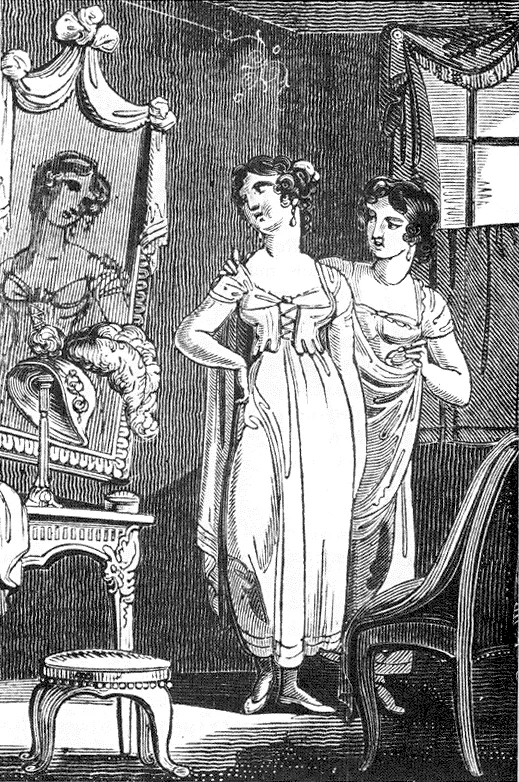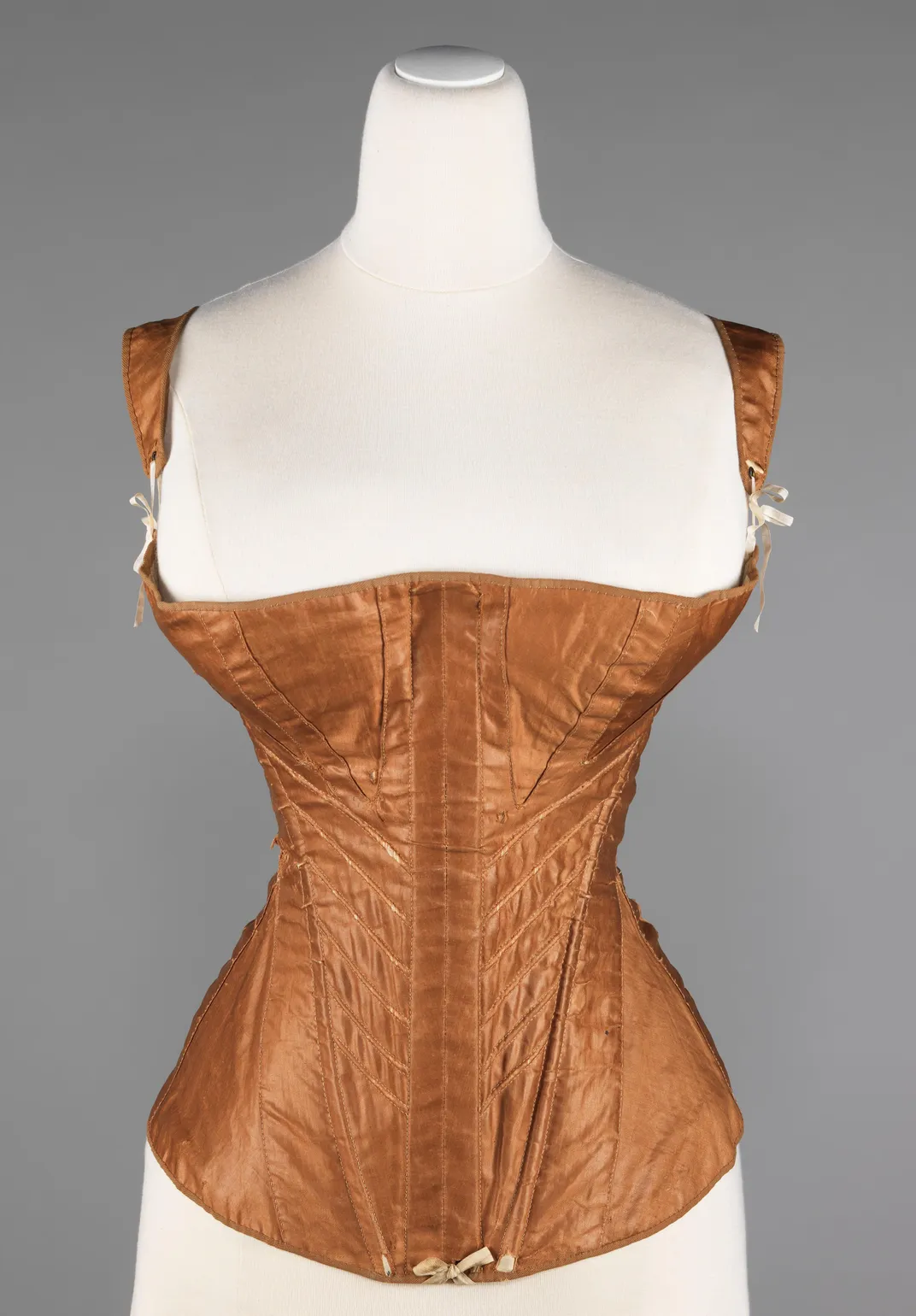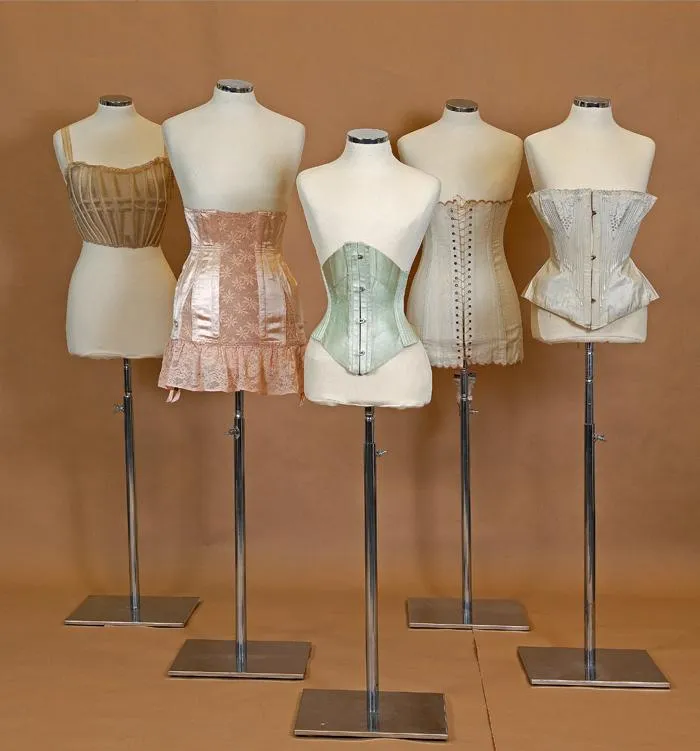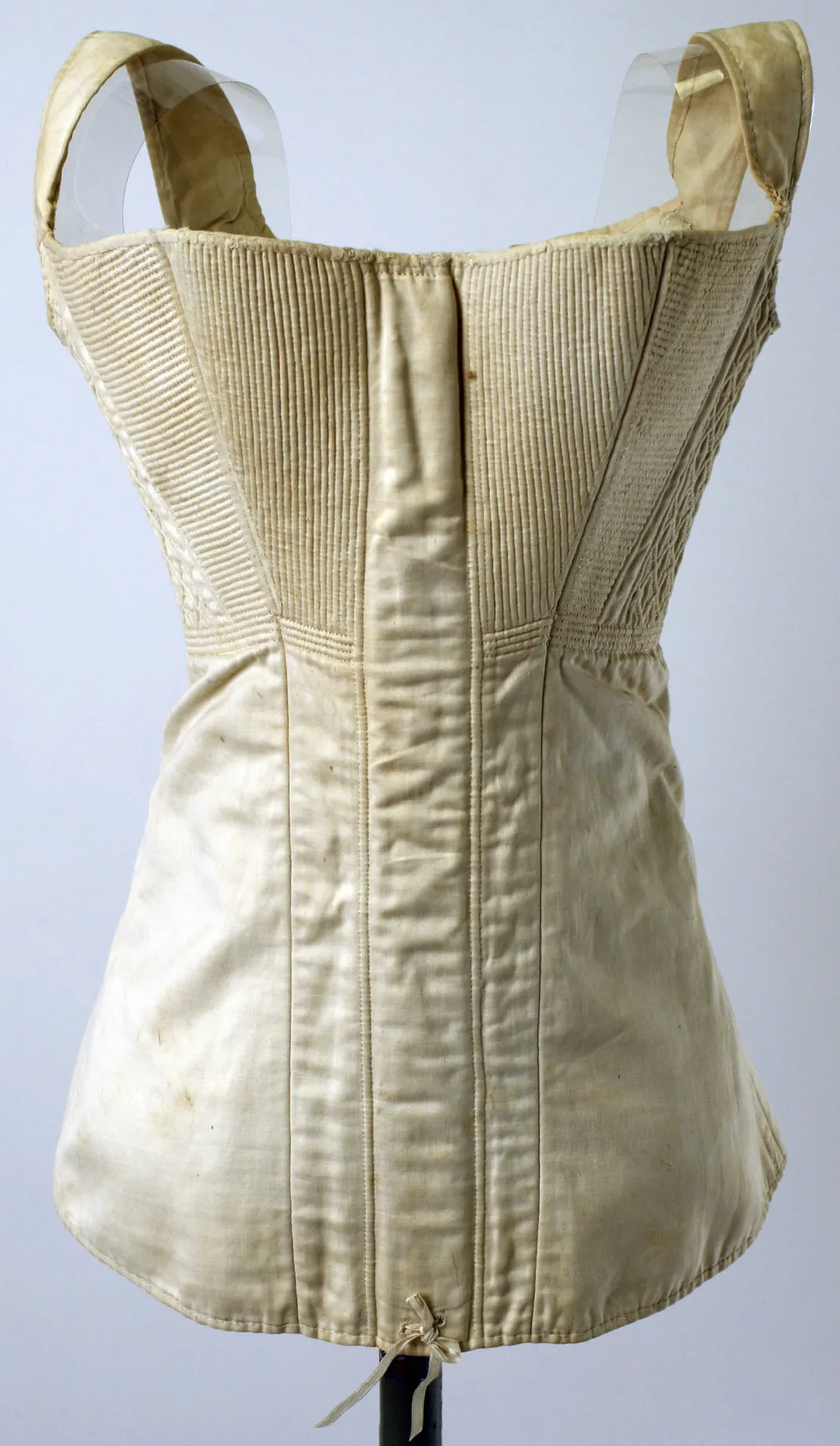What ‘Bridgerton’ Gets Wrong About Corsets
Women’s rights were severely restricted in 19th-century England, but their undergarments weren’t to blame
/https://tf-cmsv2-smithsonianmag-media.s3.amazonaws.com/filer/7b/c8/7bc830c4-462b-4b2a-93aa-1f9dd21d90b5/screen_shot_2021-01-05_at_54224_pm.png)
In the opening scene of the steamy Netflix period drama “Bridgerton,” Prudence Featherington, one of the eligible daughters of the social-climbing Lady Featherington, is dressing to be presented to the queen of England. Prudence doubles over, gasping for breath, as a maid yanks the laces of her corset tighter.
“I was able to squeeze my waist into the size of an orange-and-a-half when I was Prudence’s age,” Lady Featherington says.
Many movies, historical as well as fantastical, have a similar scene. Think of Gone With the Wind’s Scarlett O’Hara death-gripping a bedpost; Elizabeth Swann in Pirates of the Caribbean laced so tightly into her corset that she can barely breathe; Titanic’s Rose in a nearly identical scene; Emma Watson, playing Belle in Disney’s live-action remake of Beauty and the Beast, declaring that her character is too independent to wear a corset.
One other element shared by some of these scenes, among many others? None of the characters suffering through the pain have control over their own lives; in each scene, an authority figure (Prudence’s and Rose’s mothers, Elizabeth’s father) tells them what they must do. It’s a pretty on-the-nose metaphor, says Alden O’Brien, the curator of costume and textiles at the Daughters of the American Revolution Museum in Washington, D.C.
“To have a scene in which they’re saying, ‘tighter, tighter,’ it’s obviously a stand-in for … women’s restricted roles in society,” O’Brien says.
The trouble is that nearly all of these depictions are exaggerated, or just plain wrong. This is not to say “Bridgerton” showrunner Shonda Rhimes erred in her portrayal of women’s rights during the early 19th-century Regency era—they were indeed severely restricted, but their undergarments weren’t to blame.
“It’s less about the corset and more about the psychology of the scene,” says Kass McGann, a clothing historian who has consulted for museums, TV shows and theater productions around the world and who founded and owns the blog/historical costuming shop Reconstructing History, in an email.
Over four centuries of uncountable changes in fashion, women’s undergarments went through wide variations in name, style and shape. But for those whose understanding of costume dramas comes solely from shows and movies like “Bridgerton,” these different garments are all just lumped together erroneously as corsets.
If one does define a corset as “a structured undergarment for a woman’s torso,” says Hilary Davidson, a dress historian and the author of Dress in the Age of Jane Austen, the first corsets appeared in the 16th century in response to women’s fashion becoming stiffer and more “geometric.” The corset, stiffened with whalebone, reeds or even sometimes wood, did somewhat shape women’s bodies into the inverted cone shape that was in fashion, but women weren’t necessarily pulling their corsets tight enough to achieve that shape. Instead, they used pads or hoops to give themselves a wider shape below the waist (kind of like Elizabethan-era booty pads), which, in turn, made the waist look narrower.
This shape more or less persisted until the Regency era of the early 1800s, when there was “all sorts of invention and change and messing about” with fashion, Davidson says. During that 20-year period, women had options: They could wear stays, boned, structured garments that most resemble today’s conception of a corset; jumps, very soft, quilted, but still supportive undergarments; or corsets, which were somewhere in between. O’Brien says the corsets of the Regency period were made of soft cotton (“imagine blue jeans, and turn them white”) with stiffer cotton cording for support, and occasionally channels in the back for boning, and a slot in the front for a metal or wooden support called a busk. (Remember, though, these supports were made to fit an individual’s body and would gently hug her curves.) Eventually, the term corset (from the French for “little body”) is the one that won out in English, and the shape gelled into the hourglass shape we think of today.
But all along, these undergarments were just “normal pieces of clothing,” Davidson says. Women would have a range, just like today’s women “have a spectrum of possibilities, from the sports bra to the Wonderbra.” Those simply hanging around the house would wear their more comfortable corsets, while others going to a ball might “wear something that gives a nicer line.” Even working women would wear some sort of laced, supportive garment like these—giving lie to the idea that putting on a corset immediately induced faintness. For Davidson, the myth that women “walked around in these uncomfortable things that they couldn’t take off, because patriarchy,” truly rankles. “And they put up with it for 400 years? Women are not that stupid,” she says.
These garments were comfortable, Davidson adds, not just by the standards of the time—women started wearing some sort of supportive bodiced garment when they were young girls, so they were accustomed to them by adulthood—but by modern standards as well. O’Brien concurs: “To have something that goes further down your bust … I’d really like to have that, because it would do a better job of distributing the support.”
By the Victorian period, after “Bridgerton,” corsets had evolved to a more hourglass shape—the shape many people imagine when they think of an uncomfortable, organ-squishing, body-deforming corset. But again, modern perceptions of the past shape how we think of these undergarments. Davidson says skirts were bigger during this time—“the wider the skirt, the smaller the waist looks.” Museums often display corsets in their collections on mannequins as if their edges meet. In reality, they would likely have been worn with their edges an inch or two apart, or even looser, if a woman chose.
McGann suggests that one of the reasons corsets are associated with pain is because actresses talk about their discomfort wearing an uncomfortable corset for a role. “In many cases, the corsets are not made for the actress but rather a corset in her general size is used for expediency,” McGann says. “This means they are wearing corsets that don't fit them properly, and when laced tightly, that can hurt!”
So, in the Regency era and in other periods, did women tighten the laces of their corsets beyond what was comfortable—or healthy—in service of achieving a more fashionably narrow waist? Sure, some did, when they had someone to impress (and in fact, Davidson gives the Gone With the Wind corset scene high marks for accuracy, since Scarlett O’Hara is young, unmarried, and trying to make an impression). In “Bridgerton,” social striver Lady Featherington’s insistence on her daughters’ narrow waists similarly seems logical. Except…in the Regency period, where dresses fall from the bust, what would be the point of having a narrow waist? “The whole idea of tightlacing is completely pointless…irrelevant for the fashion,” Davidson says.
“There is no way that period corset is going to [narrow her waist], and it’s not trying to do that,” O’Brien adds.
Davidson has another quibble with the undergarment fashion choices of “Bridgerton” (at least the first episode, which she watched at Smithsonian magazine’s request). Corsets and stays of the Regency period were designed less to create the cleavage that modern audiences find attractive, and more to lift up and separate the breasts like “two round globes,” Davidson says. She finds the corsets in “Bridgerton” too flat in the front.
In an interview with Vogue, “Bridgerton” costume designer Ellen Mirojnick laid out her philosophy on the series' apparel: “This show is sexy, fun and far more accessible than your average, restrained period drama, and it’s important for the openness of the necklines to reflect that. When you go into a close-up, there’s so much skin. It exudes beauty.” But, Davidson says, “while they sought sexiness and cleavage and maximum exposure, the way they’ve cut the garments actually flattens everyone’s busts. If they’d gone back to the Regency [style of corset] you would have gotten a whole lot more bosom. You would have had boobs for days.”
“Bridgerton” does, however, get a lot right about the status of women in the early-19th century. Marriage was one of the only options for women who didn’t want to reside with their relatives for the rest of their lives, so the series’ focus on making “good matches” in matrimony holds true. Once wed, a married woman legally became her husband’s property. She couldn’t sign contracts or write a will without her husband’s consent.
By the mid-19th century, women had made significant gains in being able to own property or obtain a divorce. It wouldn’t be until 1918 in England or 1920 in the United States, however, that (some) women could vote. Around the same time, corsets were falling out of fashion, and many writers of the time saw a connection between liberation from the corset and women’s liberation.
/https://tf-cmsv2-smithsonianmag-media.s3.amazonaws.com/filer/e0/1b/e01ba275-32a7-4e4d-9735-a33247553040/bridgerton2520_2520liam2520daniel_netflix.jpg)
O’Brien says that looking back now, that conclusion doesn’t hold up. “You have all these writers saying, ‘Oh, we’re so much more liberated than those dreadful, hypocritical, repressed Victorians, and we’ve thrown away the corset.’ Well, I’m sorry, but if you look at shapewear in the 1920s, they’re doing the exact same thing, which is using undergarments to create the current fashionable shape,” which in the Roaring Twenties meant using “elasticized” girdles and bust-binders to “completely clamp down on a woman’s natural shape.
“Society always has a body ideal that will be impossible for many women to reach, and every woman will choose how far to go in the pursuit of that ideal, and there will always be a few who take it to a life-threatening extreme,” O’Brien adds.
O’Brien and Davidson hope people stop thinking of corsets as oppressive tools of the patriarchy, or as painful reminders of women’s obsession with fashion. That attitude “takes away female agency,” O’Brien says. “We’re allowing fashion’s whims to act upon us, rather than choosing to do something.”
Wearing a corset was “as oppressive as wearing a bra, and who forces people into a bra in the morning?” (Some women in 2021, after months of Zoom meetings and teleworking, may be asking themselves that exact question right now.) “We all make individual choices,” Davidson says, “about how much we modify ourselves and our body to fit within the social groups in which we live.”
It’s easier to think of corsets as “strange and unusual and in the past,” Davidson says. To think of a corset as an oppressive tool of the past patriarchy implies that we modern women are more enlightened. But, Davidson adds, “We don’t wear corsets because we’ve internalized them. You can now wear whatever you like, but why does all the Internet advertising say ‘8 weird tricks to a slim waist’? We do Pilates. Wearing a corset is much less sweat and effort than going to Pilates.”


/https://tf-cmsv2-smithsonianmag-media.s3.amazonaws.com/filer/f9/4d/f94db888-d131-4cc5-a640-42f91eb68ed3/1280px-womans_corset_figured_silk_1730-1740.jpg)
/https://tf-cmsv2-smithsonianmag-media.s3.amazonaws.com/filer/fa/a3/faa3c89e-ca60-4bbc-9aad-7e9f61fe7e3c/2010eb2907_2500.jpg)
